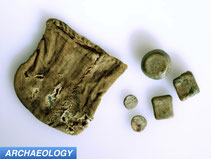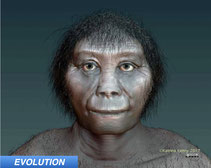
Researchers from the Tata Institute of Fundamental Research, Mumbai, India have created a diffusion equation, plugged it into a computer, and used it to simulate the peopling of India, tracking migration within the Asian subcontinent over time. The group then compared their simulated migration results with genetic data to verify their computer model. Spoiler alert, they say it worked.
Now for you archaeologists out there thinking, “wait, diffusion equation? Math is hard!” You're right, which is why the research team (Vahia, Yadav, Ladiwala, and Mathur) is comprised of three physicists and a biologist. Nonetheless, according to Vahia et al, a commonly accepted hypothesis for the peopling of India involves three migration waves out of Africa starting around 60,000 years ago. According to Vahia et al., most researchers have described the resulting population based either on caste/tribe affiliations or on linguistic affiliations, and then used those parameters to describe population movements. Eschewing convention, Vahia et al. dropped the categories and moved on to math.
Feeding geographical information into their computer simulation, the group created an 8 kilometer by 8 kilometer grid over the Indian subcontinent. They assumed people would move to adjoining grid squares based on four parameters: altitude, how flat the land was regardless of altitude, how close water sources were, and population density. The “desirability” of each parameter within the grid squares as well as how many people each square could support are mathematical functions within Vahia et al.’s algorithm (we’ve provided a link at the end of this article for anyone who wants to see how the math works).
Once the algorithm was designed, the scientists used archaeological data to determine the earliest human entry points into the subcontinent, fed that information into the simulation, and let the computer do the rest. In the end, the group ran the simulation on three ancestral groups for 500 steps and for 800 steps, translating into a timespan of 10,000 YPB to 6,000 YBP and 10,000 YBP to 3,600 YBP respectively. Eventually populations merged within the simulation, so researchers analyzed the genetic profiles of people living in the merger zones to validate the model.
In the end, Vahia et al., concluded the diffusion model works, and it provides a migration map that genetics alone can’t fill in. They also state the model may be of utility in various population dynamics studies as a way to study population movements without the need for comprehensive genetic testing.
Vahia et al.’s work can be found on PLOS ONE at https://doi.org/10.1371/journal.pone.0176985
Vahia, Mayank N., Nisha Yadav, Uma Ladiwala, Deepak Mathur “A diffusion based study of population dynamics: Prehistoric migrations into South Asia.” PLOS ONE, published May 11, 2017 DOI: https://doi.org/10.1371/journal.pone.0176985



